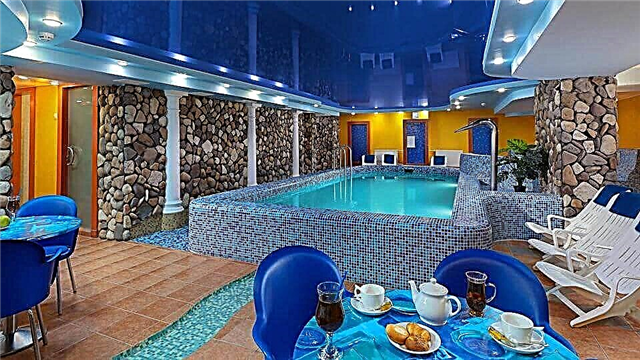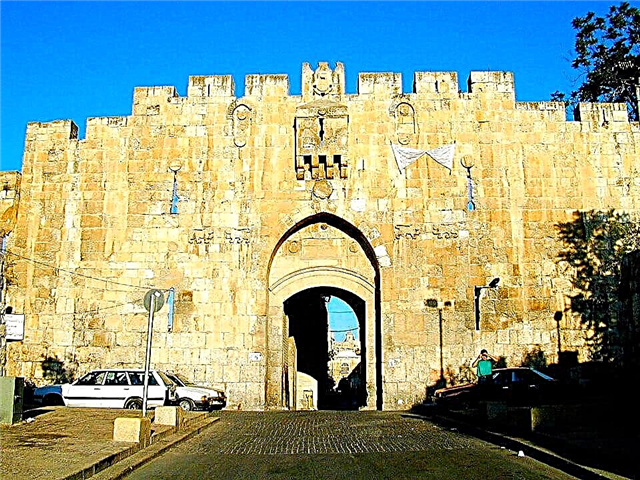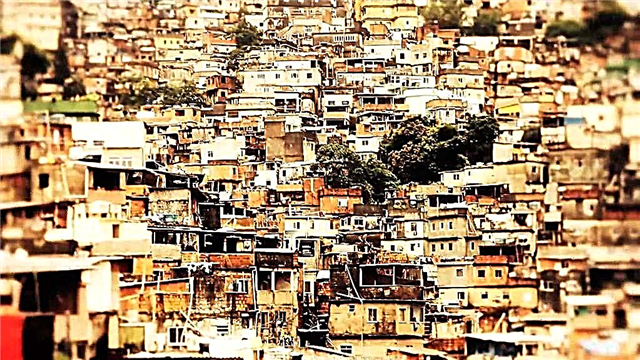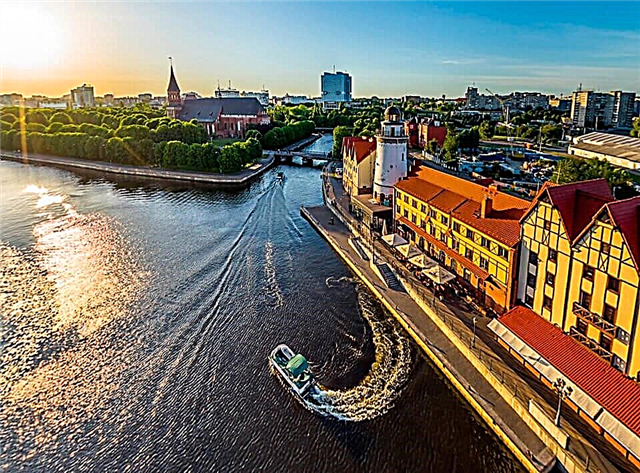Address: Russia, Yaroslavl region, Pereslavl-Zalessky, st. Pleshcheevskaya, 13a
Build date: 1789 year
Coordinates: 56 ° 44'18.0 "N 38 ° 50'56.8" E
Content:
The Church of the Intercession is located slightly away from the busy part of Pereslyavl-Zalessky and is surrounded by low, mostly wooden houses and tall trees. There is no lush, conspicuous luxury in this church. It is beautiful in that it has carried the traditional features of provincial architecture through almost two and a half centuries. This is the only city temple that was not closed in the city in the last century, and where services were not interrupted.
Church on the Market Square
The first mention of the temple on the site where the Church of the Intercession now stands dates back to 1628. In the patriarchal salary books of that time, one can read about the wooden church of Paraskeva Pyatnitsa, as they wrote then “St. Christ's Martyrs on Friday at the Posad ".

The place where this temple stood was called the Market Square in the city (now it is called Narodnaya Square). Trade in Pereslavl, located in an advantageous location, has always been brisk. The square housed rich city shops, warehouses with goods and, of course, numerous taverns. According to the documents, it is clear that the Intercession Church was not the only temple near the square. But only it has survived to this day.
A quarter of a century later, it was recorded in the scribes that there is a priest's yard at the church and 39 neighboring households are considered parish. Soon, in 1659, a new wooden church was erected, which was dedicated to the Protection of the Most Holy Theotokos. But over time, he too grew old and dilapidated. In 1730, it was noted in the registration books that the floors in the temple were greatly lowered, and it was almost impossible to conduct church services. Since 1776, this church has ceased to be used, and it stood empty, without a parish, as they said then "idle".
The stone temple, which adorns Pereslavl-Zalessky to this day, was erected here in 1789. For its expensive construction, two donors (patrons) at once allocated the necessary money - the secretary of the district court D. Tobolsky and the wealthy merchant P. Bykov. The temple was made of bricks and the Vvedensky limit was immediately set up in it.
In order to support the priests of the Intercession Church (according to the parables of the temple), 650 rubles were allocated per year. And there was a special house for the priest and his family. In the parish, according to the records of that time, there were about 250 souls of both sexes.

During the years of Soviet power, at the time of the confiscation of church valuables, it was to the Intercession Church that liturgical utensils, gifts and icons from neighboring churches that had been closed were taken down. In those years, only thanks to the efforts of the historian, art historian and ethnographer Mikhail Ivanovich Smirnov, it was possible to preserve some of the most valuable shrines and works of art collected from local churches. And they were preserved in the Pereslavl Museum.
Icon of the apostles Peter and Paul
The famous icon of the Apostles Peter and Paul belonged to the once lost Peter and Paul Church. It was kept in the Intercession Church and from here was transferred to the museum. Today this wonderful monument of Russian church painting can be seen in the exposition "Iconography of the 15th-18th centuries" of the Pereslavl State Historical, Architectural and Art Museum-Reserve, located on the territory of the Goritsky Monastery.
The icon was painted in the 15th century. It is made on a wooden board, on which a fabric - pavoloka - was glued. It was used to hide possible local defects in the tree, for example, knots. On expensive icons, a pavolok made of expensive intricate weave was glued onto a cypress board. And on cheaper icons, a pavolok made of fabric with a rare interlacing of threads was used - serpyanka or even paper.
Levkas, a special soil made of chalk mixed with animal or fish oil with the addition of linseed oil, is applied to the pavolok of this icon. They covered the icon board in several layers. And after drying, they were polished using horsetail stems, which contain a lot of silicon.

The icon is painted with tempera. It measures 112 by 85 cm and depicts the supreme apostles Peter and Paul. On the icon, they stand in calm poses, facing each other and as if talking. The faces of both saints are meek and pensive. Not rich in colorful performance, this painting is filled with harmony and beauty. The icon was created in the period after the liberation of Russia from the Tatar-Mongol yoke. At this time, there was a great spiritual upsurge in public life and peace-loving moods prevailed. And the creators of this wonderful work of art managed to realize this.
Architecture and interior decoration of the temple
The Church of the Intercession has retained many of the architectural features of the Moscow Baroque, which was so popular in the middle of the 18th century. The graceful head of this temple and the high three-tiered bell tower stand out in the surrounding one-story buildings of Pleshcheevskaya Street. The church is visible from everywhere, attracts attention and looks especially good from the opposite, left bank of Trubezh. Its appearance has hardly changed over the entire time. Only one of the windows on the south side was rebuilt into the entrance.
The temple complex consists of the main volume of the church - "octagon on a quadruple", a rectangular refectory covered with a gable roof, and a bell tower. The entire architectural composition is stretched out in one line. The southern facade of the temple faces Trubezh, and the northern one - to Pleshcheevskaya Street. The church is covered with a hemispherical eight-slot roof, the bulbous dome is supported by a small octahedral light drum. And in the roof there are four round skylights - lucarnes.

A high three-tiered bell tower, crowned with a spire, was added to the temple at the beginning of the 19th century. There is no documentary evidence of this. But the construction time can be concluded from the peculiarities of the building's architecture. It has features transitional from baroque to classicism. The square tiers of the bell tower slightly decrease in height, so it looks more like a pillar. All tiers originally had open arched openings. But on the lower tier they were laid in the late 19th - early 20th centuries. This was caused by the need to attach a rectangular gatehouse to the bell tower on the south side. The bell tower has an unusual shape and supports a high spire.
The facades of the temple have a typical Baroque decor. On the arched windows of the first floor of the church, the octagon, the apses and the refectory, there is a framing with platbands with ears and earrings. And the corners of the church and the bell tower are decorated with pilasters.
The interior decoration of the Intercession Church deserves special interest. It is in very good condition. The four-tiered wooden gilded iconostasis in the Roman-Byzantine style corresponds to the second half of the 19th century. And the floors of the temple are from the beginning of the 20th century. They are made of cement mosaic with geometric inserts. In the refectory there is another wooden gilded one-tier iconostasis. And the royal gates are covered with rich wooden carvings of floral ornaments.
The temple is connected with the altar by three narrow openings, and with the refectory - by one small arched opening. Oil painting of the 19th-20th centuries has been preserved on the walls of the church. It depicts the saints in full growth, as well as the biblical stories "The Descent of the Holy Spirit", "Healing the paralyzed at the sheep's font", "Resurrection of the daughter of Jairus", "Christ in the house of Martha and Mary", "The expulsion of the merchants from the temple" and others.

In the Intercession Church, things from the old, long lost Peter and Paul Church have been preserved. This is one of the altar crosses with an inscription dated 1758 and the gospel of 1701. In addition, in this church you can see good examples of wooden carvings and icons of the 17th-18th centuries.
The current state of the church and the visiting regime
The Church of the Intercession is an active Orthodox church. You can get here every day from 7.30 to 11.00. And on the days of worship - from 7.00 to 19.00. The temple has two thrones: in the cold part of the church - in honor of the Intercession, and the warm part of the temple is dedicated to the Entry into the temple of the Most Holy Theotokos.
Church shrines, especially revered by believers, are icons painted in honor of the Mother of God "Kazan", "Bogolyubskaya" and "Three joys". The temple holiday is celebrated here on October 14, the day of the Protection of the Most Holy Theotokos. In addition, this church celebrates December 4 - the day of the Entry into the Temple of the Most Holy Theotokos.
How to get to the Intercession Church
The Church of the Intercession is located in Pereslavl-Zalessky on Pleshcheevskaya Street, 13A. It is not far from the Right Embankment of the Trubezh River and the People's Square of Pereslavl-Zalessky. If you cross the city, moving from Moscow, then after the historical center - the Old City and the bridge over Trubezh, you need to turn left, onto Pleshcheevskaya Street. From here to the temple just over 400 m.











